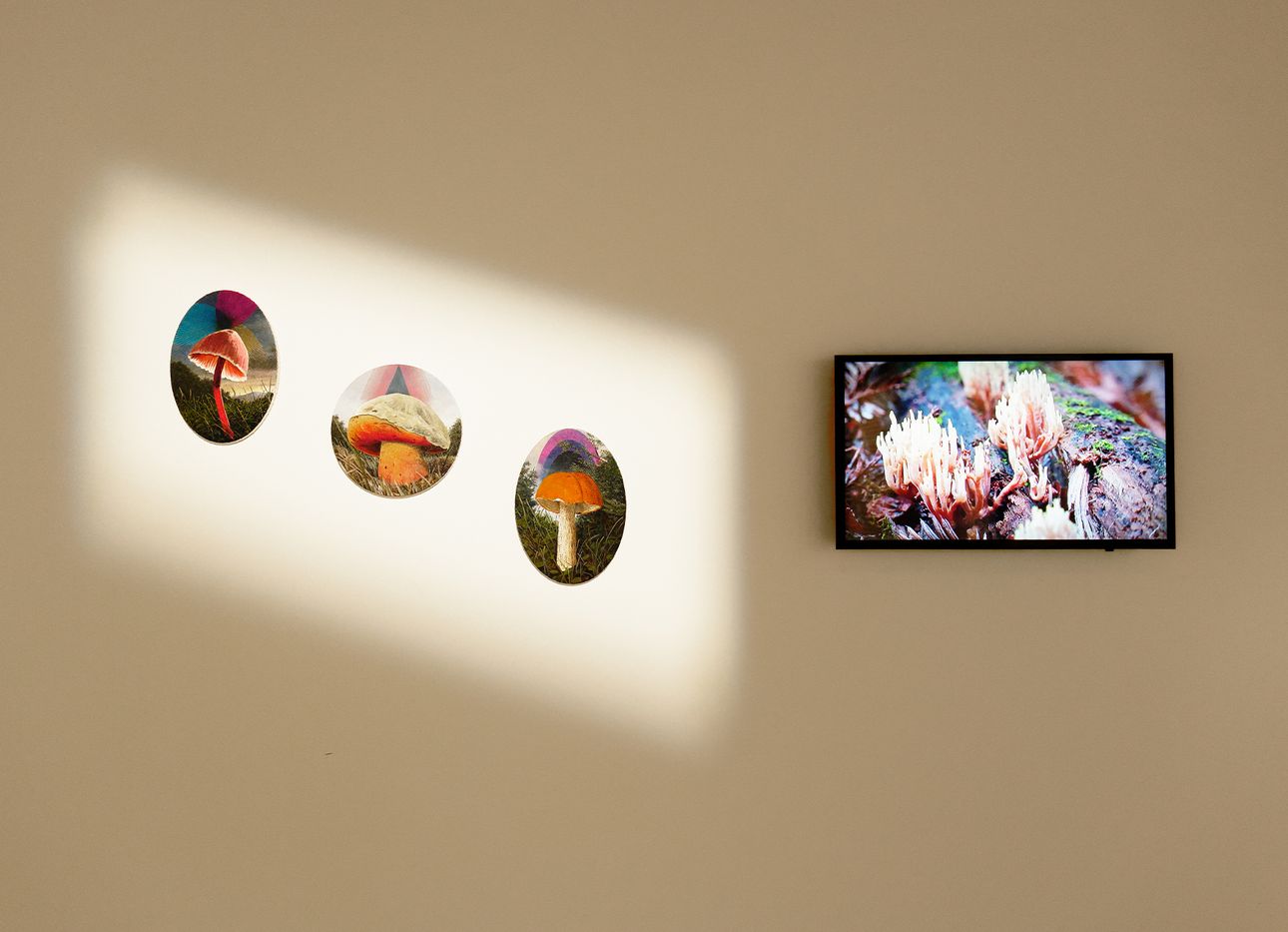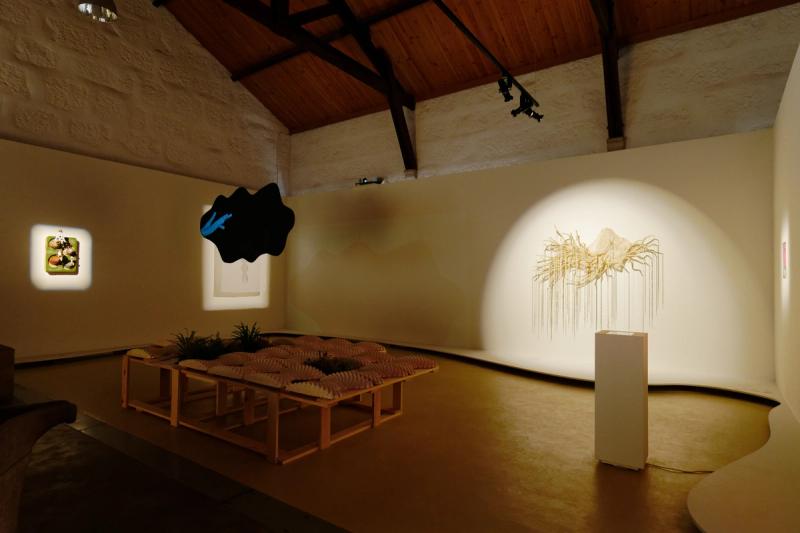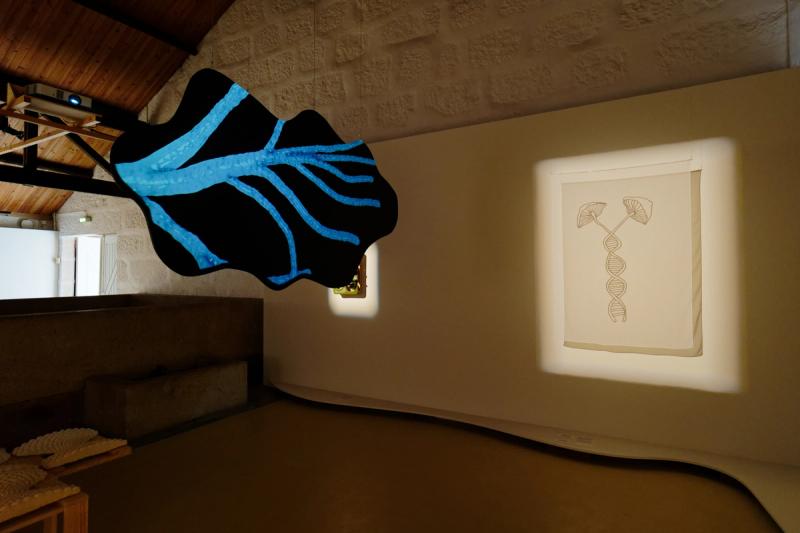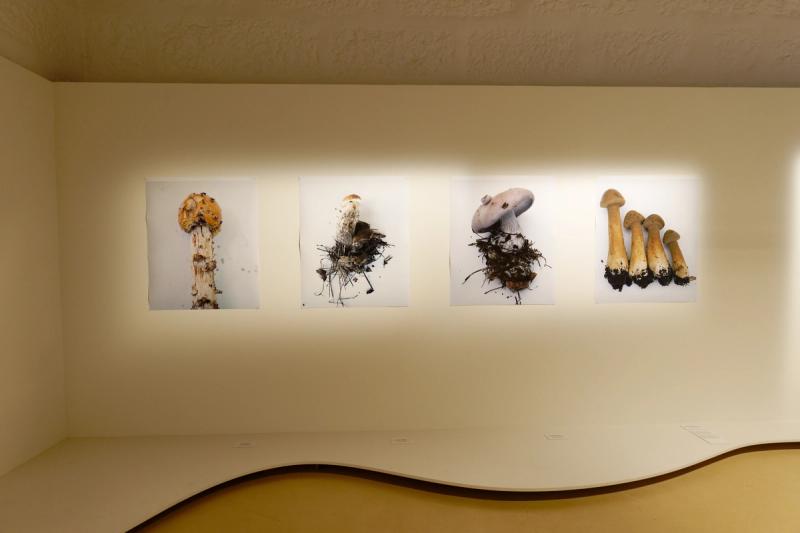
At Portugal’s Serralves Museum, Mushrooms Are Works of Art
In 2014, author Ursula K. Le Guin gave a short talk about how to live in the anthropocene, arguing that humans should approach nature with more subjectivity and empathy. Instead of cold taxonomy and thoughtless industry, Le Guin reflected on what it would mean to collapse distance between person and plant, and classify flora, fauna, and fungi as “kinfolk.”
Where fungi’s concerned, the Serralves Museum in Porto, Portugal, has the bases covered. Located in a well-landscaped park, inside a fern-covered villa with a red tile roof, you’ll find an exhibition titled “The Art of Mushrooms,” (on view through December 31) that features the work of 20 mushroom-curious artists from around the world. Francesca Gavin, who’s curated the show before, has developed the exhibition into something at once playful and poetic, forward-looking and world-building.
The show is arranged around three primary concerns. The first is about facts. Mushrooms grow from rotted material. They clean up toxicity. They were the first new life to appear at Chernobyl, documented in Takashi Homma’s giclée prints of fungi foraged from near the blast zone. Sofia Arez’s illustrative watercolors would fit right into a handsome field guide. Carsten Höller, who trained as an agricultural scientist, has created a polyester “Giant Triple Mushroom:” a three-species conglomerate tall enough to ride most roller coasters. That Höller made something human-sized is significant. In all of these works there’s the hint of the loving, ever-present hand of the documentarian.
The second focus concerns the mind. Psychedelics have a place here, as with Jeremy Shaw’s Kirlian aura photographs of Psilocybe, but Gavin’s reticence to tie this part of the show exclusively to the preexisting culture of mushrooms as “far out, man” is canny. The show is more interested in world-building. In Seana Gavin’s collages, for example, wide-eyed mushrooms hug under a rainbow, lakeside homes are made of fungi, and mushrooms sprout minarets. Species collapse here. Mushrooms become a vocabulary for new, imagined realms.
Last comes a synthesis of mushrooms in society, with a focus on materiality. One could imagine a future wearing Kristel Peters’s mycelium shoes to walk down a pathway of Mae Ling Lokko’s mushroom bricks. Doors are opened onto possibilities and more questions are raised than answers given, but one thing is made abundantly clear: Mushrooms are here, ready for us to embrace them.
Le Guin, at the end of her talk, said that while we can’t speak the same language as nature, that might be a reason for even deeper admiration. It’s well-known that mushrooms communicate to one another. Just because we can’t understand them directly doesn’t mean we shouldn’t strain our ears to listen.



